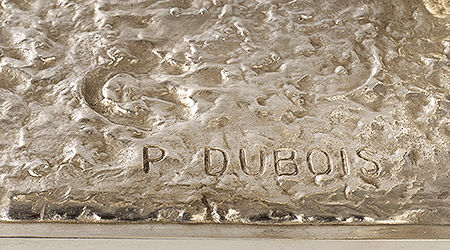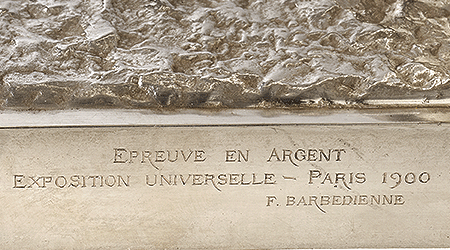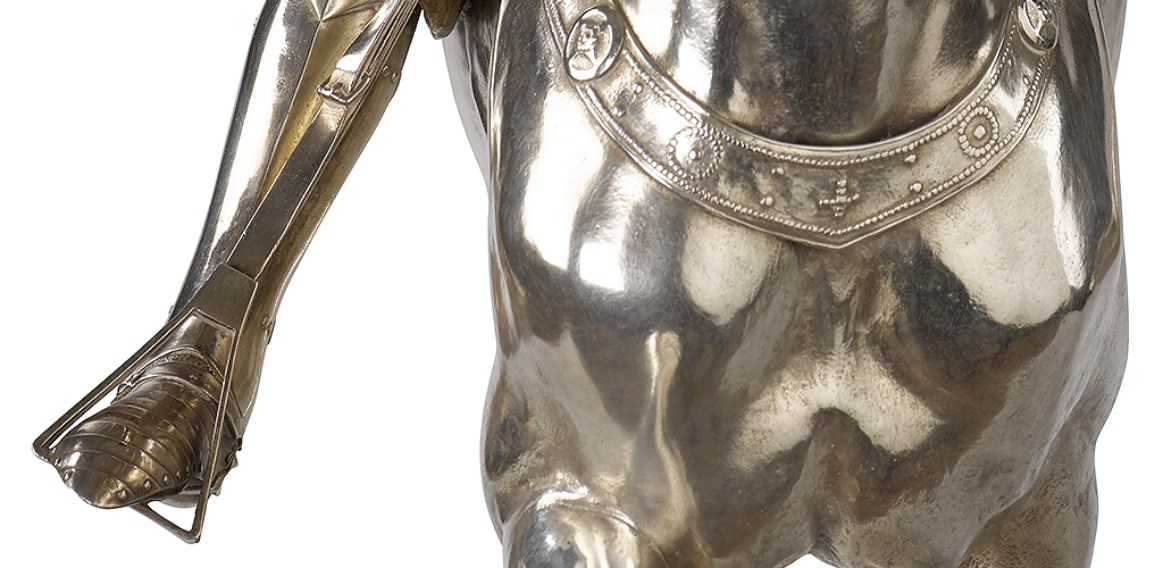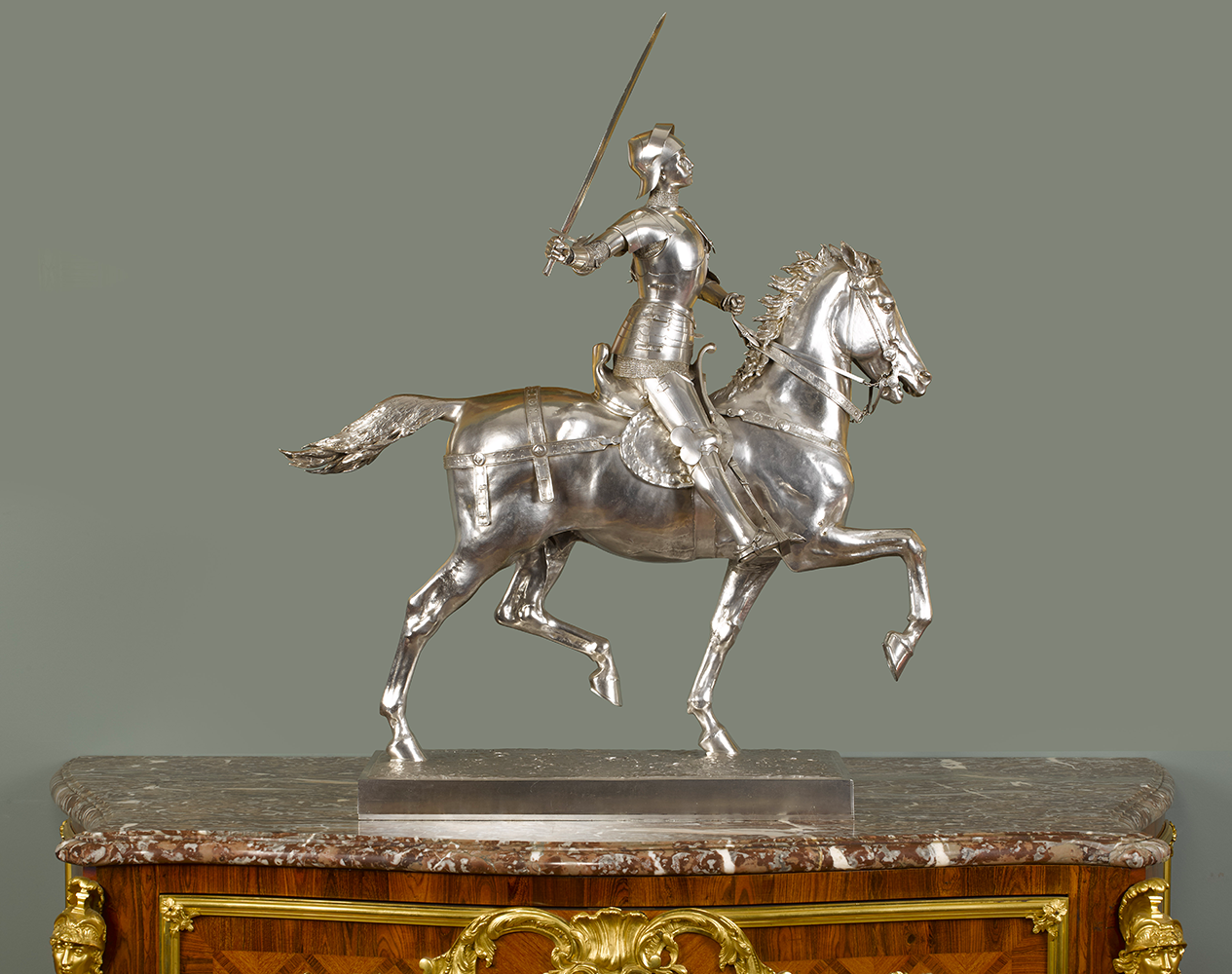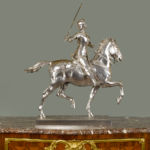Provenance
Sale: Sotheby’s London, The Great Exhibition sale, 31 October 2006, lot 640
Exhibitions
Paris, Exposition Universelle, 1900
Bibliography
Paris Salon, Catalogue Officiel, Paris, 1889, p. 329
Paris Salon, Catalogue Officiel, Paris, 1895, p. 264
Catalogue Illustré Officiel de l’Exposition Décennale des Beaux-Arts 1889-1900, Paris, 1900, pl. 4
J. Mackay, The Dictionary of Sculptors in Bronze, Woodbridge, 1977, pp. 111-112
P. Kjellberg, Bronzes of the 19th century: Dictionary of Sculptors, Atglen, 1994, pp. 296-298

Equestrian statue of Joan of Arc by Paul Dubois in Reims
A solid sterling silver sculpture of Joan of Arc on horseback. The woman clad in armour is shown atop a cantering charger, ready for battle. With her left hand, she holds the reins of the horse, while with the right she raises a sword. The sculpture is resting on a rectangular base, chased to simulate ground, signed P. Dubois, the plinth stamped Epreuve en argent Exposition Universelle – Paris 1900 F. Barbedienne.
Joan of Arc, a young peasant girl who led French troops against invaders in the Hundred Years War, became an increasingly important figure in France in the 1870s and 1880s, after the defeat in the Franco-Prussian War. The medieval martyr became a patriotic symbol and was commemorated in monumental sculpture, painting, and decorative works of art.
The present figure was designed by Paul Dubois (1827-1905) and cast in silver by Ferdinand Barbedienne (1810-1892). The original plaster model was first exhibited at the Paris Salon of 1889. At the Salon of 1895, the statue was reappeared in bronze, and then, in the following year, a four-metre high version was unveiled in front of the Reims cathedral. In 1900, a full-size recasting of the statue was erected in the Place St-Augustin in Paris. In the same year, the silver statue now presented was shown at the Exposition Universelle.
Paul Dubois, a disciple and nephew of the famous Baroque sculptor Jean-Baptiste Pigalle, was trained under Armand Toussaint at the École Nationale des Beaux-Arts, and then spent four years in Italy studying Renaissance masterpieces. Joan of Arc, as well as Dubois’s other equestrian sculptures, were largely influenced by Andrea Verrochio’s statue of Bartolomeo Colleoni in Venice.
